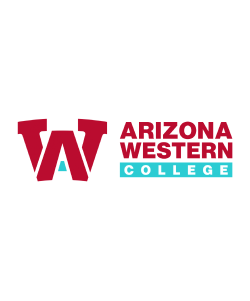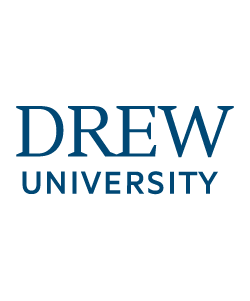
EAB Thought Leadership
The ‘Outsider’ Advantage:
Leveraging External Interim Leadership for Growth and Optimization
By Christine Hammond, Ph.D.
CampusWorks Executive Advisory Board Member
Former President of Mid-Michigan College (2014-2020)
Effective presidents and chancellors understand the power of collaboration with their leadership team. This partnership is foundational; CEOs depend on their teams to push the institution’s strategic vision forward, offering honest, skillful advice when necessary. Conversely, team members anticipate that their efforts and ideas will be met with thoughtful consideration, actionable feedback, and, where appropriate, support through endorsements and the allocation of resources. This mutual trust and support are pivotal for the seamless operation of any institution. Yet, in times of transition or challenge, the infusion of external interim leadership can catalyze growth and innovation, albeit with the need for careful planning.

Simon Sinek’s Golden Circle reimagined for CampusWorks
Drawing from my experiences as both a community college president and an interim leadership consultant, I’ve identified critical inquiries that leaders should consider when exploring the prospect of leveraging external interim leadership or managed services. This framework is inspired by business guru Simon Sinek’s Golden Circle, which urges leaders to trace every dilemma to its root cause by asking, WHY, HOW, and WHAT.
Taking a thoughtful approach not only enriches the institutional fabric but also safeguards its legacy during pivotal periods of change. Let’s begin with the first question in Sinek’s Golden Circle: WHY?

Christine Hammond, Ph.D.
WHY are we struggling to achieve our goals?
As the CEO, you likely have a more comprehensive understanding of your institution and its operating environment than anyone else. And you have a broader remit. Your decisions to advance or defer a course of action impact the welfare and success of your students and your employees.
One of the great challenges of a presidency is the need to be centered so deeply that you can hear the institution’s heartbeat while also maintaining enough perspective to view it objectively and in its entirety.
For these reasons, the questions that keep you up at night are worth examining in the light of day. Certainly, you should attend to the physical aspects of your sleeplessness – exercise, nutrition, eyestrain and the like. But for many presidents, the core of their midnight ruminations centers on “Why?”
Why – despite my best efforts and those of my colleagues – are we struggling to achieve our goals?
The answer will not be found by you alone in the middle of the night. It takes a team — your leadership team and perhaps even a team beyond that.
Good CEOs set high expectations for their leadership team. Exceptional CEOs frame those expectations in an institutional context. Is it reasonable to ask your team to be the heart and soul of your organization but maintain enough intellectual and organizational distance to redesign its systems? Your team lives within the institutional picture — in the day-to-day work of their departments, divisions, units, and unions. It’s tough for them to see the big picture while they are living inside of it.
Asking why the college struggles to be its best self is a solid starting point for that effort. The leadership team will need your help and reassurance to voice their answers.
Consider the following questions to explore the topic and focus individual and team discussions:
- You know your midnight worries. What is keeping the members of your leadership team up at night? Share your concerns and listen to theirs. What are the common denominators?
- How do your individual and collective worries relate to the fulfillment of your institutional strategic goals (and/or those of your state system)?
- What are the most frequent lamentations in the institution? What are people trying to tell the leadership of the college/university?
- What functions are draining the time and energy of your team?
- Where does the time go — to finding workarounds to clunky software and systems or to direct fulfillment of your institutional mission?
Second, seek clarification and specification in finding solutions:
- Having now explored the current situation, what steps can be taken to improve the institution (and your sleep)?
- What preliminary results would confirm that we are moving in the right direction?
- How quickly can we achieve some of those results?
- How well do we really understand our present situation? Be specific. Would an external audit of our circumstances reveal new insights?
- What internal expertise and availability do we have for system analysis and optimization?
This last question is particularly important. We tend to embed institutional effectiveness functions in the job descriptions of one or two individuals/departments — perhaps the chief of staff, chief information officer, or institutional research officer. We expect these leaders to address optimization issues while they are doing (many) other things — responding to personnel issues, purchasing equipment, preparing the budget, etc. Often, there is a cry for help — for additional staff so that there will (finally) be time for big-picture thinking.
Before you respond to that cry for help by creating a new position or reallocating existing staff, be specific about the needs and time duration. Perhaps, instead of hiring one full-time person for a year (or more), the institution would make faster progress by sequentially using the focused expertise of different professionals in short bursts of time.
For example, you may need a person to concentrate for several months on identifying the disconnects in your software packages and enterprise systems. That might be supplemented or followed by the work of a skilled programmer who concentrates on fixing those issues. Training your team to effectively utilize the improvements requires another set of competencies for a matter of weeks or months. That same short-term focus mentality might also be applied to the integration of new federal or state requirements in your system or to the development of measurable objectives for your strategic plan.
Specifically identifying the tasks to be done and applying focused expertise enables your team to concentrate on strategic tasks that support the success of students.
This process of exploration, clarification, and specification will reveal the constraints within your institution and prime your team for answering the next question in Sinek’s Golden Circle: HOW?
HOW do we move toward optimal performance for our institution?
Through exploration and clarification, you have addressed the root causes of that late night question, Why – despite my best efforts and those of my colleagues – are we struggling to achieve our goals?
Now it’s time to figure out how to address your institution’s constraints. Specifically: How can the expertise of an external interim leader optimize our efforts?
Should you decide to invest in outside expertise, it is essential to identify the right type of partner. There is a big difference between a vendor that sells products and a professional services organization that specializes in providing interim leadership or managed services. Products, like software, will require implementation by your existing personnel. After some period, these products may save time or reap benefits, but only after competent implementation by your staff.
In contrast, an external interim leader from a reputable professional services organization will not only integrate themselves into your existing operations but will also have the skills and expertise of an experienced team supporting their efforts. It would be reasonable to expect that an external interim leader could:
- Lead an objective evaluation of your institution’s current situation.
- Propose a set of improvements.
- Work with you to determine the appropriate time and scope of work.
- Provide a plan for training existing staff and handing off responsibilities at the conclusion of the contract.
A good partner deploys their expertise in a way that expands and strengthens the capacities of your home team.
Questions to Ask When Selecting a Partner
When selecting a professional services organization to partner with, consider the following:
- What are the values of the professional services organization? Do these values align with those of your institution?
- Given aligned values, what evidence can the organization provide that their people live their values?
- What are the qualifications and experience levels of people who are hired and deployed by the professional services organization? That is, you began this quest to find specific expertise. Does the organization offer what you need?
- Are the organization’s employees committed and satisfied in their work? A robust stable of people can assure you get the right skill sets for the work at hand. High employee satisfaction can ensure that they will stay with your project without unnecessary turnover and tumult.
- Does the professional services organization have a sufficient track record? Firms come and go; some get acquired, others fold. Does the organization have a sufficient track record and identity to ensure reliability for your project?
- Does the organization evaluate its work for clients? If so, what do those evaluations say?
Once you’ve answered these questions, you’re ready for the final question in Sinek’s Golden Circle: WHAT?
WHAT can we do to maximize success?
The decision to bring in interim leadership from outside the institution may be met with internal opposition. Such resistance can stem from concerns over institutional culture disruption, financial implications, the perceived short-term focus of external leaders, and the impact on internal staff morale and career progression.
As a leader, it’s crucial to address your team’s concerns head-on, not only to bridge understanding and foster an environment of openness and strategic collaboration. Let’s take a closer look at each of these concerns.
1. Risk to Institutional Culture.
Key stakeholders may worry that bringing in leadership from outside the institution can pose a risk to the established institutional culture, potentially leading to conflict and misunderstanding.
While integrating an outsider into the fabric of an institution’s culture may pose challenges, it also offers a unique opportunity for cultural revitalization and fresh perspectives. External leaders, with their diverse experiences, can introduce new ideas and practices that challenge the status quo, fostering innovation. A thoughtful, structured onboarding process can facilitate smoother integration and mutual understanding.
2. Cost Implications
Your CFO may wonder if the cost of hiring an interim leader from outside will be higher than promoting from within.
From my experience, while the initial investment might seem higher for an external interim leader, the return on investment can be substantial. External leaders bring specialized skills and experiences that can drive strategic initiatives, resolve long-standing issues, and implement efficiencies that result in cost savings over time. Furthermore, the temporary nature of the role avoids the long-term financial commitments associated with a permanent position. You must also consider what it costs to do nothing, allowing a key position to remain vacant.
3. Short-term Focus
Given their temporary tenure, some may worry that external interim leaders might prioritize short-term gains over long-term stability.
Having served as an external interim leader myself, I can attest that most are highly experienced in navigating the balance between immediate needs and long-term goals. In fact, their objective perspective can be an important asset, enabling them to make decisions that are in the best interest of the institution’s future, rather than being influenced by internal politics or personal career progression. Moreover, their success is measured by the lasting impact of their contributions, incentivizing them to prioritize sustainable growth and improvement.
4. Staff Morale
There may be concerns that bringing in an external interim leader might demoralize internal candidates who aspire to leadership roles, potentially affecting morale and retention.
I’ve always found that transparency and communication are key in mitigating this risk. It’s important to convey to staff that the decision to bring in external interim leadership is made with the institution’s best interests in mind, often to address specific challenges that require specialized expertise. Encouraging internal talent development and providing clear pathways for advancement can help maintain morale and engagement. Additionally, the external interim leader can play a crucial role in mentoring internal candidates, preparing them for future leadership opportunities.
Tips for Establishing a Successful Partnership
Before the individual or team arrives on campus, articulate the WHY and HOW of your decisions:
- Describe the work that will be done, the challenges that will be addressed, and the timeframe for execution.
- Identify the location for the work and the strategies for integrating corporate team members into the appropriate departments and employee networks.
- As soon as possible, introduce the interim employees to your home team. You might publish a written introduction to the broad campus community and facilitate in-person and virtual introductions to the leadership team and specific campus managers.
- Determine an appropriate orientation process for their arrival, and ensure they have appropriate access to the systems they will need to get the job done.
- Identify the checkpoints for progress.
Leading by Example
CampusWorks is a professional services organization that helps institutions bridge costly leadership gaps — for a few months or a few years — to restore stability and strengthen operations until a permanent replacement is found. I worked with CampusWorks in the past when I was a community college president and now as a leadership consultant, so I’ve seen firsthand their ability to be a trusted partner to leaders who are navigating myriad challenges.
Here are a few examples of interim leadership support CampusWorks has recently provided:

Metropolitan State University of Denver
CampusWorks addressed vacancies resulting from the Great Resignation by deploying an interim Financial Aid leader and enrollment leader at Metropolitan State University Denver (MSU Denver). The Financial Aid leader stabilized the department, enhanced team performance, and led pivotal technology projects, resulting in transformational growth such as earlier awarding, reduced processing times, and improved call center efficiency. A permanent leader now continues this momentum. Additionally, CampusWorks provided an interim enrollment leader who improved constituent relationship management (CRM) system usage for better enrollment funnel visibility and developed a six-month Strategic Enrollment Management (SEM) Plan involving the Financial Aid and Registrar offices, laying the groundwork for the University’s enrollment recovery until the official SEM Plan was implemented. Read the full story »

Arizona Western College
Located in rural Yuma, Arizona, where access to specialized IT talent is limited, Arizona Western College (AWC) partnered with CampusWorks to provide an interim chief information officer (CIO) and technical resources to advance the College’s goal of becoming a technology-driven organization. The results were so powerful, AWC decided to entrust the full leadership and management of its IT operations to CampusWorks for more than a decade. Read the full story »

Drew University
CampusWorks deployed an experienced higher education CIO to spearhead the University Technology (UT) transformation at Drew University. As part of this initiative, CampusWorks will lead and manage UT for five years. The early success of this partnership led Drew to broaden its scope to include HR Managed Services. Over five years, CampusWorks will oversee Drew’s HR functions—from recruitment to payroll, compliance, and employee relations—streamlining operations, boosting efficiency, and allowing the University to concentrate on its primary goals, thus improving organizational performance and employee satisfaction. Read the full story »

